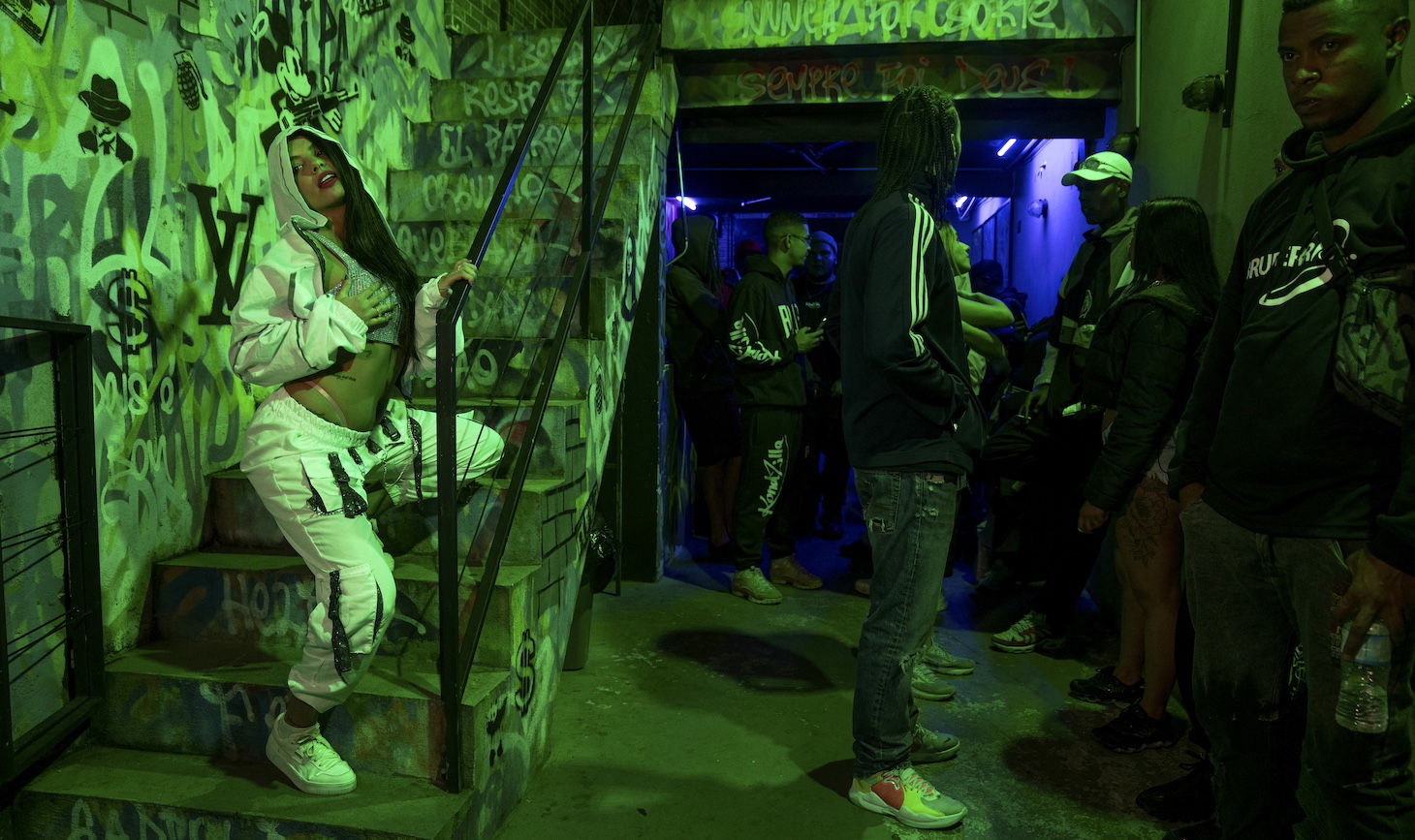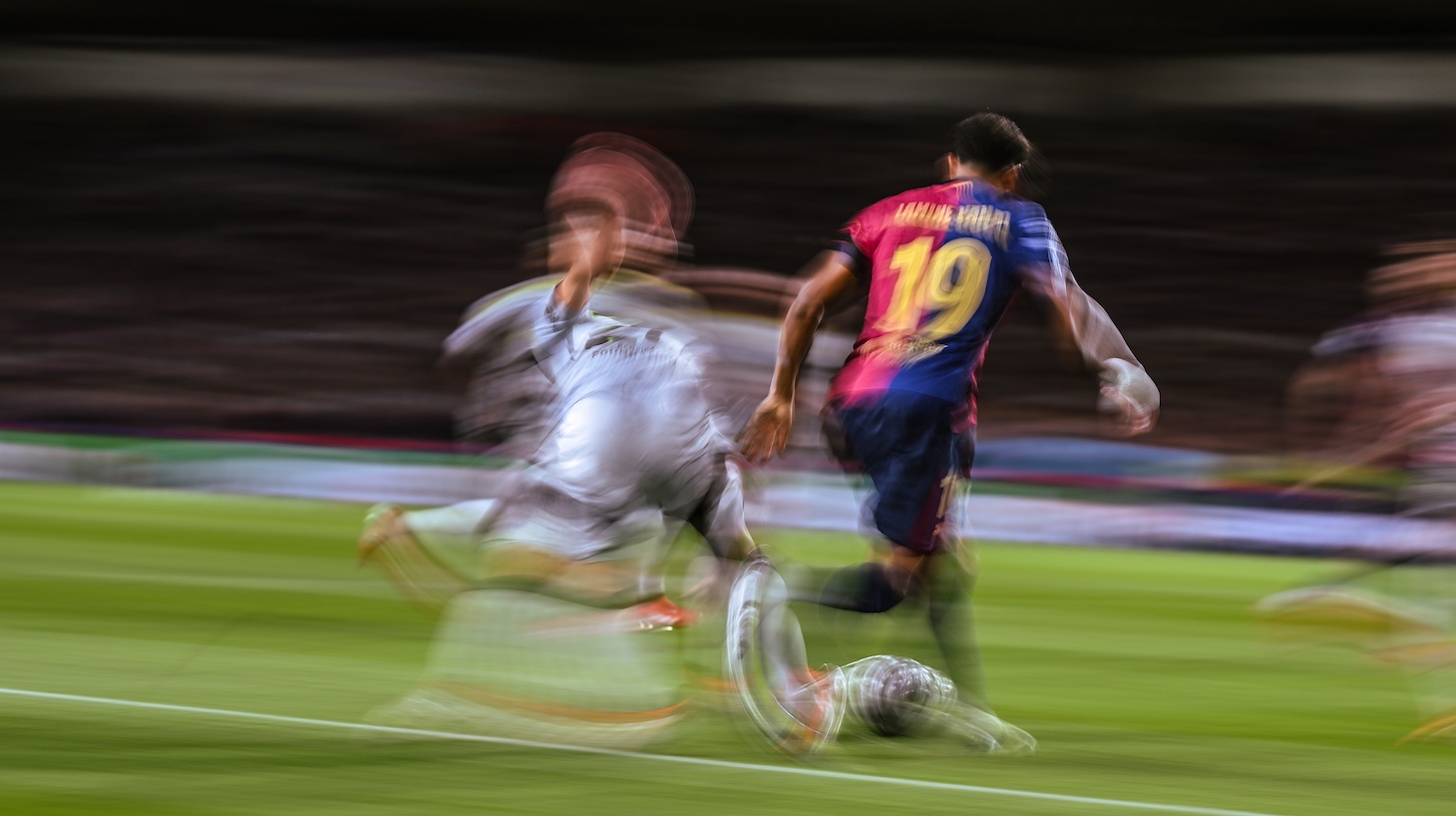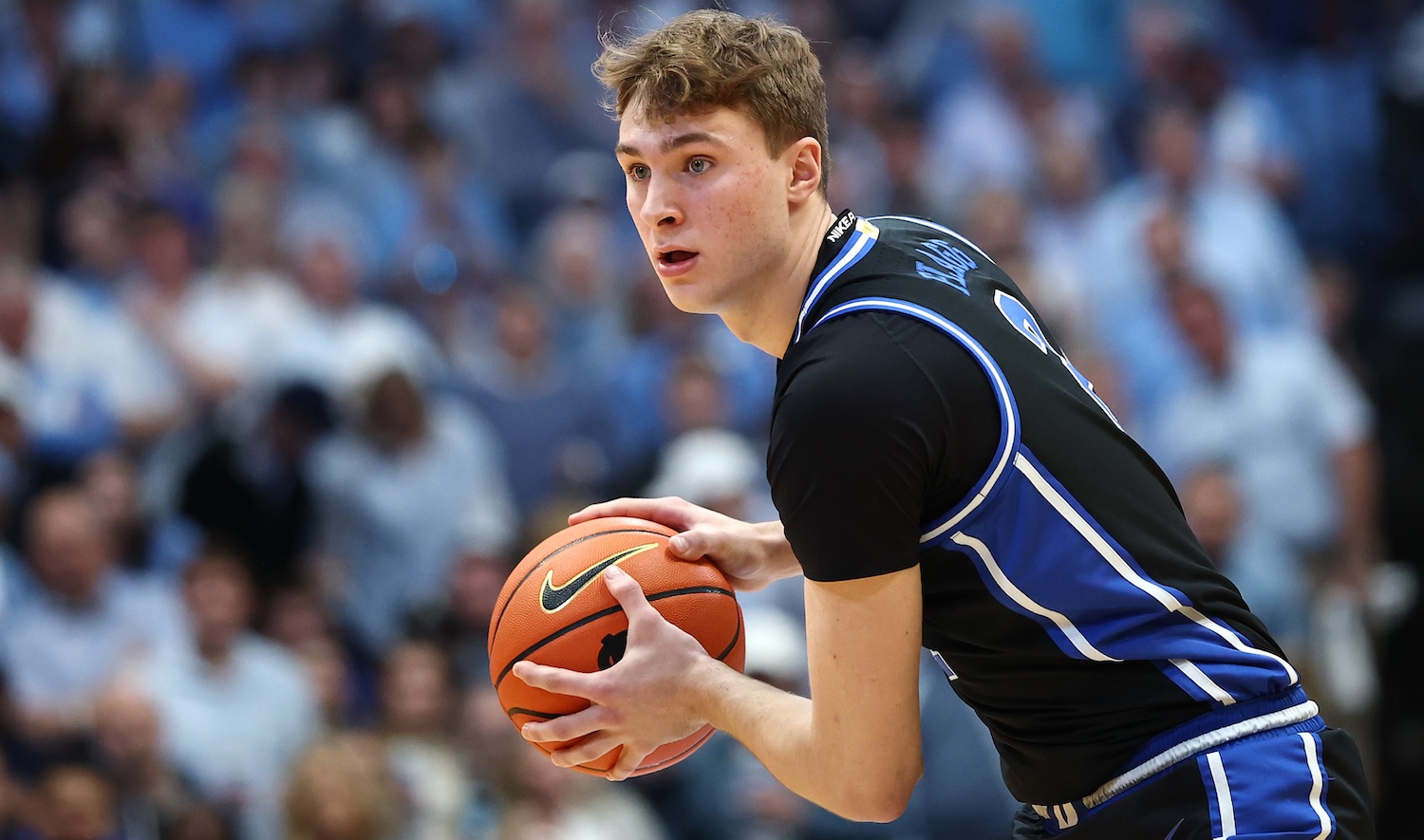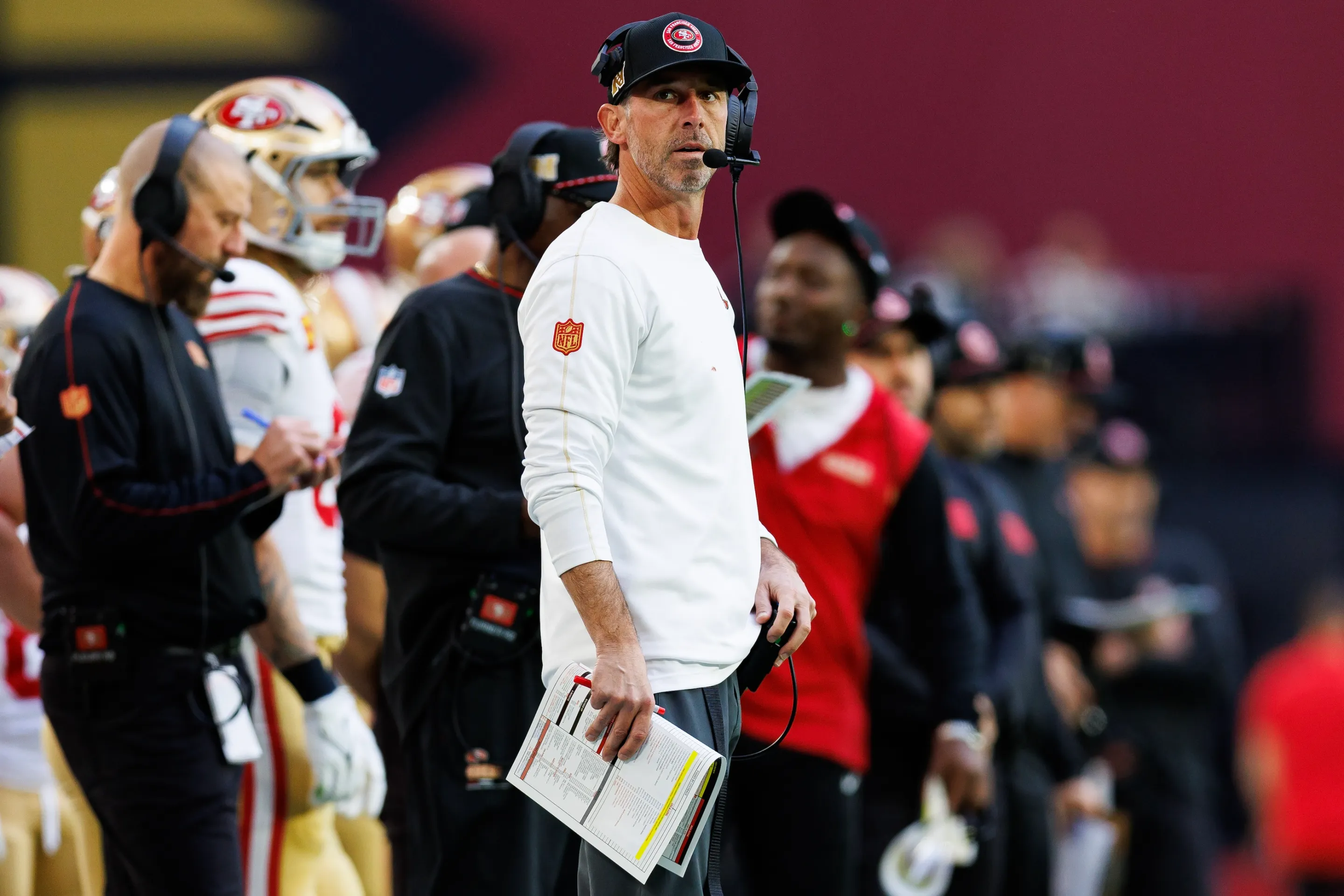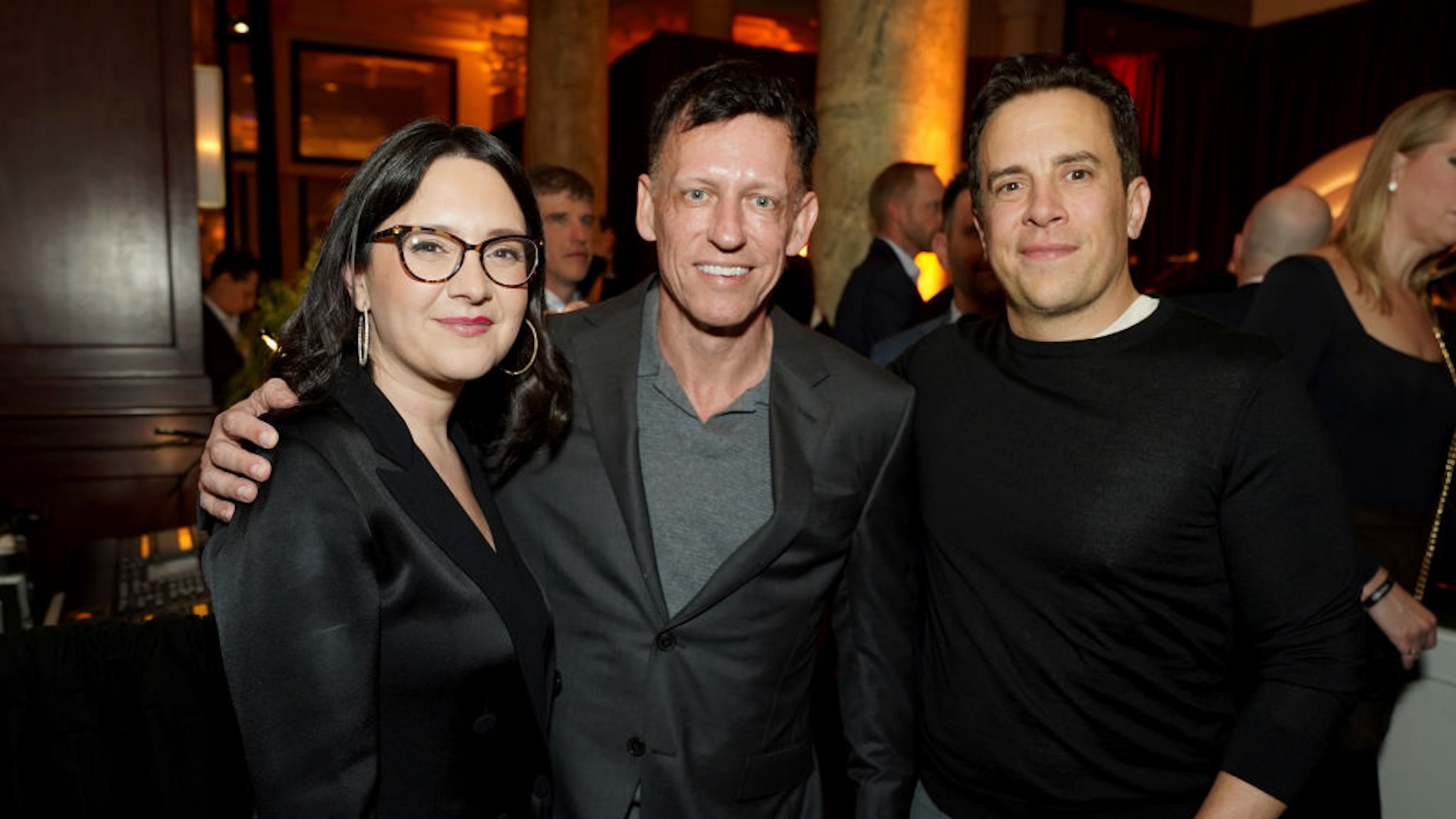If you're anything like me—a Millennial rapidly (though gracefully!!!) aging out of even the most generous definition of "youth," who once prided yourself on being a music head but who lost the pulse of your favored genres sometime around when all the new rappers were named [Something] Baby—you've probably heard of but are not too familiar with baile funk, the Brazilian music genre the kind of people you used to be can't stop talking about.
Maybe the recent, increasingly loud din made amongst adventurous music fans in the West about Brazilian funk isn't your first introduction to it. Maybe you once downloaded those old Diplo funk compilations that came out a couple decades ago (boy, time flies!), from one of his many excursions out Daniel Plainviewing for a new sound to rip off. But maybe you didn't really give those comps much attention, easy as they were to lose in your ever-ballooning music library (shoutout to Megaupload!), and your only subsequent interactions with contemporary South American music were from passing references or short clips when a Brazilian soccer player would get ahold of the locker room's aux cord (do the kids still use those?) and put his teammates to shame with his dancing skills.
But with the one remaining fingertip that keeps you in touch with new music, you've probably heard people, particularly people in the hip hop and hip hop–adjacent electronic music scenes you used to keep up with, going on about the crazy, amazing shit coming out of Brazil. Intrigued by all the talk of sonic awe and bewilderment, you likely clicked one or two of the YouTube or Soundcloud links that accompanied the social media hosannas that came across your feed (let's be real: your creaky-ass knees are not carrying you to the parties where this kind of music is being played, danced to, and discussed irl), after which you were probably a little more intrigued but still not particularly satisfied. That shit was loud. And cool. And weird. But where to next?
In your efforts to dig a little deeper and really get your bearings, maybe you found either the blog or Twitter account of @billdifferen, the work of music writer and foremost gringo funk evangelist Tyler Linares. Finally, you'd found a resource deep enough to immerse yourself into the world of funk. The 100 best songs of 2023! Let's go!
Only, there was still something keeping you from that click you were desperate for, the one that would unlock the music's secrets and unleash waves of stunned euphoria, that aural high music obsessives are forever chasing. Linares's work is incredible in its depth, thoroughness, care, and communicated joy. It is also close to impenetrable for an old head like you. At issue is the nature of Brazilian funk, which, at least in the niche offshoots you're most interested in (presumably you don't need help getting into Anitta), is hyper-local and underground, existing almost entirely outside of the bounds of the traditional music industry. That means where the music really lives, breaths, and evolves is in the parties where the DJs and MCs play their music, and in the form of loose songs posted on streaming sites like Soundcloud and YouTube.
Again, if you're anything like me, you've never felt comfortable swimming in the fast-paced, diffuse waters of the streaming sites. Deep down in the core of your musical worldview, despite all the happy years spent panning for gold amongst the muck of Lil B's and Curren$y's monthly output of 30-song mixtapes, the rockist veneration of the album as the one true vehicle of artistic merit has stubbornly endured. Buying an album on your phone, listening to it in the car or on your apartment's sound bar, living with the album and discovering its nooks and crannies on repeated listens—this is the experience you're accustomed to. How the hell do you work a Soundcloud? You're supposed to click a song, figure out if you like it, then just click around some more, hopping from account to account until you've hearted enough songs to make a playlist or something? You're too old for this shit! You just want to hit "play" once and let it ride while you do the dishes! How on Earth are you supposed to figure out what you like when there's nothing for you to hold in your hands?
What probably happened then was that you listened to a few songs, liked them well enough, but couldn't find a hook that could pull you deeper, and so your intrigue fizzled out. The praise for baile funk is such that you maybe even tried again a couple more times, with the same results. Resigned to your fate as an old fogey technologically and dispositionally ill-equipped to understand what the cool kids are doing nowadays, potentially forever precluded from that heady buzz of experiencing something incredible and new, you probably retreated to the safe confines of your established musical interests.
If this sounds like you, then I have some good news. You are not as old as you think (well, you are old, but your condition isn't as hopeless as you imagine), Brazilian funk isn't as unfathomable as it may seem, and the enormous rewards of finding your way into it are right there for the taking. I should know, since I have made the transition to the other side as recently as a week ago. It's not actually the huge number of artists, or the dozens and dozens of subscenes inside of subscenes, or the technological difficulties that a Soundcloud-based genre poses to streaming-averse olds that's keeping you from what you want. And while your curiosity is important, it alone will not be enough. What you need is to fall in love. For a person like you, that probably requires falling in love with an actual album or an artist. What worked for me, and what I hope will work for you, is the work of Brazilian funk demon D.Silvestre.
It was only last Thursday when I randomly came across the umpteenth bit of praise for Brazilian funk. This time, though, it was a recommendation for an album rather than just a link to a song. The album in question was D.Silvestre's d.silvestre, released on July 12, 2024. I'd long been on the lookout for an actual funk album to hold onto after several failed attempts to throw myself into the Soundcloud streams of singles. D.silvestre wasn't my first funk album—I tried DJ Anderson do Paraíso's Queridão but it didn't stick with me—but I was still so eager to understand the unique, psychotic, Vantablack, brilliant music I'd kept hearing about over the past couple years that I endeavored to take the leap one more time. I pulled up d.silvestre on Bandcamp, plugged in my headphones, and pressed play. My life has been consumed by baile funk ever since.
When you think of a sort of gateway drug to introduce someone to something new—in this case a genre of music—you typically think of something that eases the neophyte in, maybe something that shares certain commonalities with something they already like, something noticeably of the genre but with the genre's hallmarks a little toned down compared to what's out there on the extremes. D.Silvestre and his self-titled album are not that. This is heroin as gateway drug.
Rather than a single overarching genre, Brazilian funk—often called baile funk in the Anglophone world, and known as funk carioca or just plain funk in Brazil—is perhaps better thought of as a constantly emerging and mutating and combining set of microscenes, which can vary widely. D.Silvestre's style fits into what is possibly the single most aggressive, disorienting, terrifying subscene of a genre typified by those sorts of sounds: funk mandelão. For the initiate, it doesn't matter too much that funk mandelão comes from Sao Paulo, or what the particulars are that separate it from funk carioca (carioca being the demonym for Rio de Janeiro, where the genre itself was born) or funk ostentação or funk 150 BPM or the countless other scenes. What matters is that when you play d.silvestre, and you hear what sounds to Westerner ears like if a vinyl album of the Suspiria soundtrack had been left in a gutter since 1977 only to be picked up today and stuck in a deep fryer in which the collected works of both Death Grips and Aleister Crowley had been stewing and then uploaded to a digital music store near you, you will have gotten a 24-minute, mind-exploding introduction to some of the best, quintessentially freaky music Brazilian funk has to offer. It's the ideal test to discover if this music is for you.
I was only about halfway through the second song on d.silvestre—"Beat Matemático," one of the HARDEST songs on one of the HARDEST albums by one of the HARDEST producers I've heard in my life—when it became clear to me that Brazilian funk is indeed for me. At last the genre had clicked with me, and I sat there, my neck snapping with barely sub-concussive force, my face looking like I'd snorted an entire vial of smelling salts, in a state of blissful awe in how dark, minimal, sinister, frayed, grainy, and gorgeous D.Silvestre's music was. It was the feeling I'd been chasing ever since I'd first heard about Brazilian funk, a feeling I had more or less conceded might be permanently beyond me as I exited the openness and ardor of youth.
Part of the value of finding your gateway artist is how it helps guide your journey deeper into the genre, as well as establishes your nascent taste and appreciation for it. Through d.silvestre, I realized that I loved D.Silvestre in general. I got his 2023 album ESPANTA GRINGO (appropriately titled, as it translates to "scare the gringos"), and then got O Inimigo Agora é Outro, Vol. 2 from earlier this year, and realized that the 22-year-old D.Silvestre (another hallmark of the genre: its leading lights are hilariously young) is simply a genius with an incredible catalog already. Through going deep on D.Silvestre, I learned that the aggressive, spooky vibes that I loved from him are typical of funk mandelão. That took me to the subgenre's page on Rate Your Music (a flawed but useful tool for music discovery), wherein I discovered that there were actually a lot of albums in this scene and also Brazilian funk as a whole, when I'd previously thought that it was basically all Soundcloud one-offs.
After checking out a bunch of the artists and albums listed there, I became a huge fan of fellow funk mandelão artists like DJ K (his albums Panico No Submundo and O fim! are both great) and DJ Arana (I highly recommend his Carreira Solo EP). Still utterly obsessed, and consistently having my world rearranged with each new revelatory artist, I went searching in other funk scenes, where I heard about DJ Ramemes (Tamborzin De Volta Redonda is great if you're a fan of the dark funk mandelão sound, though check out Sem limites if you're after something a little less harsh), and was brought back to DJ Anderson do Paraíso (listening to Queridão after having established a taste for funk made me hear it with all new ears, amazed by its much slower speed and even sparser sonic palate, and brought me to his newer EP Paraiso sombrio, which is fantastic).
I didn't particularly vibe with some of the other highly regarded funk albums I came across (though I'll list some here in case you're after more recommendations: Crizin da Z.O.'s Acelero, FBC and VHOOR's Baile, NTS's compilation Funk.BR: São Paulo, Cabezadenego, Mbé, and Leyblack's Mimosa), but overall I couldn't have been more delighted with my first week in the funk. To get a more holistic view of the genre as a whole, I tried to read up on funk's history and the different subgenres and some interviews with the artists (crazy but true: DJ Arana, a literal teen but somehow also a veteran in the game, makes his beats on his phone!). My hunger for new funk even led me to signing up for Soundcloud, where, armed with a decently informed understanding of at least my own taste, I found it far less imposing a place as I'd imagined. Turns out, it really is as simple as listening to some songs and hearting the ones you like and following some pages and going on with your day!
Again, this entire journey from slight funk-curiosity to full-blown funkophilia has only been a week for me. I am nowhere close to being an expert. In fact I barely know what I'm talking about, as is necessarily the case with a massive musical tradition of which one has only scratched the surface. Part of me worries about my kind of interest, which could uncharitably though maybe not entirely incorrectly be characterized as a washed American searching around the globe for cheap musical thrills to remember what it was like to feel young. The ecosystem that has produced this remarkable music scene is a delicate one, which has clearly thrived while existing at the margins of the music industry and the Western world's covetous eye. Part of what makes funk funk is its fast pace, the way sounds and techniques arise and evolve at lightspeed, the ease with which songs are posted online to be discovered by the specific audience that knows how to find it, the way it stays hidden from and/or scares off the gringos. Is the growing prevalence of funk albums itself a manifestation of the mainstreaming and exporting of the genre, with all the changes that will inevitably bring? Is the thin fandom of an American funk dilettante in his mid-30s even good for funk at all?
Great music, like all great art, is both contextual and transcendent. It is shaped by and in conversation with the artistic scene from and into which it emerges, and knowledge of that context is crucial for any appreciation that aspires to real depth. At the same time, a great work can transcend the contingencies and particularities of its context, offering a powerful, visceral experience to those who receive it on its own terms. Oftentimes it's the transcendent aspect that first strikes, inspiring such interest and passion that the one experiencing it is driven to excavate the work's context to better understand the feeling. I don't think there's anything necessarily wrong with me or, if you're like me, you having our socks knocked off while listening to D.Silvestre or any other funk artist or album or song, as long as it also inspires at least some of us to seek that deeper contextual understanding as well.
And if any genre actively courts an immediate, visceral impact in its listeners, old and new alike, it's funk. It reminds me of how D.Silvestre himself described his funk mandelão baptism, which came the first time he heard DJ Magrones’s “AUTOMOTIVO CADE AS INFLUENCER":
“I was like, ‘are you crazy? This is absurd. This is impossible.'” he said, “then I was like, 'My God, what is this? Why is this hitting so much?' That’s when I started listening to it more.”
